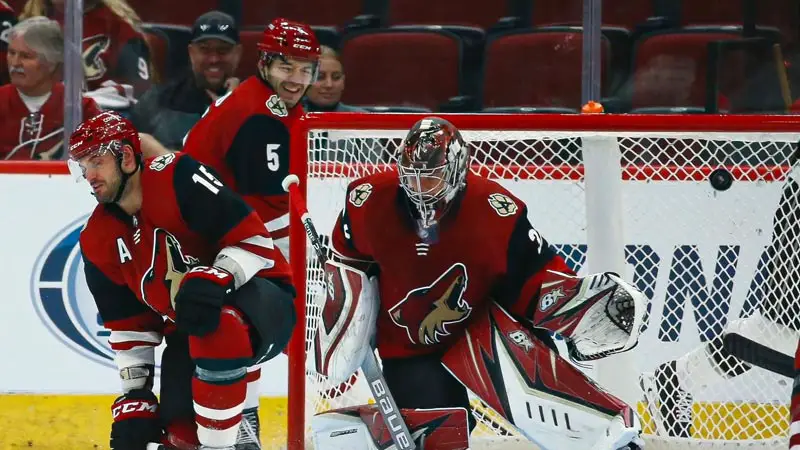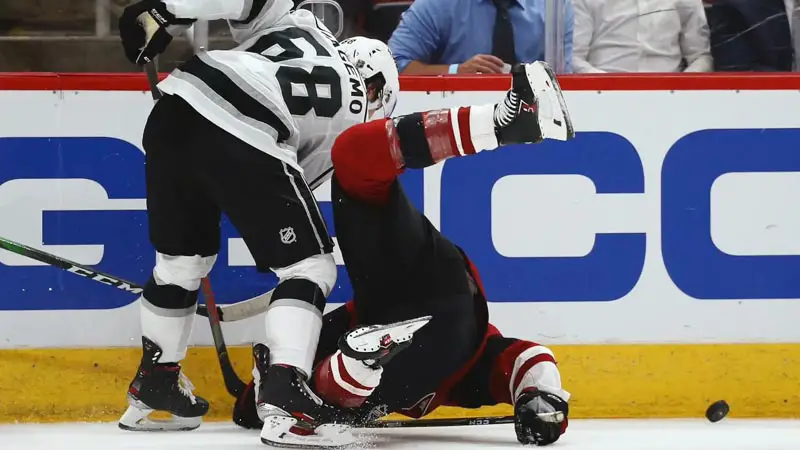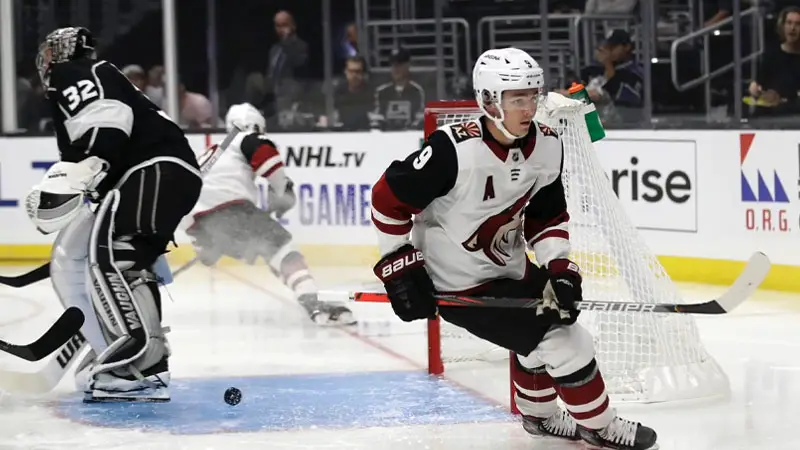In the dynamic realm of professional hockey, the utilization of split-squad games has emerged as a strategic cornerstone, significantly influencing the landscape of the NHL.
These preseason fixtures, once viewed merely as preparatory exercises, have evolved into a catalyst for success, offering teams a multifaceted toolkit for player development, strategic experimentation, and global outreach.
As we delve into why split-squad games are good for the NHL, we uncover how they provide a nuanced platform for talent assessment, tactical fine-tuning, and fostering a deeper connection between teams and their fanbase.
Beyond the surface, these games contribute to the very essence of the sport’s growth and competitiveness, setting the stage for teams to navigate the arduous journey of the regular season with a refined edge. So, stay focused.
The Evolution of Split Squad Games
Split squad games have undergone a fascinating evolution in the world of sports, particularly in team-based competitions.
Originally devised as a means to give players more playing time and teams more opportunities for evaluation, these games have evolved over time to serve various purposes.
Here are some of the key points highlighting the evolution of split-squad games:
Player Development and Evaluation
Split squad games initially emerged as a tool for player development and evaluation.
Coaches and team management used these games to provide more playing time for their athletes, enabling them to showcase their skills and allowing the coaching staff to assess their performance in a competitive environment.
This practice proved invaluable, especially during pre-season, when teams needed to make critical decisions about their rosters.
Strategic Adaptations in Regular Seasons
Over time, the concept of split-squad games expanded beyond the pre-season and found utility in the regular season as well.
Teams began strategically using split squads to manage their rosters more effectively during a dense schedule.
This evolution allowed coaches to rest key players selectively, preventing burnout and injuries while maintaining a competitive edge by deploying fresh talent in various games.
Fan Engagement and Global Reach
The evolution of split-squad games also took into account the growing importance of fan engagement and the global reach of sports.
Teams started incorporating split squad games into their strategies for international tours and exhibitions.
This not only provided fans from different regions with the opportunity to witness their favorite teams in action but also allowed teams to expand their brand globally, contributing to the overall growth of the sport.
Experimentation with Tactical Approaches
As split-squad games became more prevalent, coaches began using them as a platform for experimenting with different tactical approaches.
Teams could test new formations, player combinations, and strategic variations without the intense pressure of a regular-season game.
This experimentation during split-squad games proved to be a valuable learning experience, helping teams refine their strategies for crucial matchups.
Technological Integration for Performance Analysis
The evolution of split-squad games also witnessed the integration of advanced technologies for performance analysis.
Teams started employing data analytics, video reviews, and other technological tools during split-squad games to gain insights into player performance, identify areas for improvement, and optimize their overall team strategy.
This data-driven approach added a new dimension to the evolution of split-squad games, emphasizing the importance of technology in modern sports.
The evolution of split-squad games reflects the dynamic nature of sports, adapting to the changing needs of teams, players, and fans.
Why Split Squad Games Are Good for the NHL?

Split squad games bring significant benefits to the NHL by offering a range of advantages for teams, players, and fans alike.
Firstly, these games provide an invaluable platform for player evaluation, allowing teams to assess talent, test new combinations, and make informed roster decisions during the preseason.
The strategic use of split squads in regular seasons enables teams to manage player workload effectively, preventing fatigue and injuries while maintaining a competitive edge.
Furthermore, these games contribute to fan engagement, as they offer supporters the chance to witness their favorite teams in action during the preseason and showcase the NHL’s global reach through international tours.
Additionally, split-squad games allow coaches to experiment with different tactical approaches without the pressure of regular-season standings.
The flexibility and multifaceted advantages of split squad games make them a valuable and integral component of the NHL, enhancing player development, strategic planning, and fan interaction.
Advantages of Split Squad Games for Teams
Split squad games offer teams in various sports, including the NHL, a unique set of advantages that contribute to their overall success.
These games, typically held during preseasons, have proven to be strategically beneficial for teams in several ways.
Player Assessment and Development
Split squad games provide an extended and intensive platform for evaluating players, especially those on the fringe of making the team’s roster.
Coaches can assess individual skills, teamwork, and overall performance, aiding in better-informed decisions during roster selection.
Additionally, the increased playing time allows young or less-experienced players to develop their skills and gain crucial experience in a competitive setting.
Flexibility in Lineup Evaluation
With split squad games, teams have the flexibility to experiment with various lineups and player combinations.
Coaches can assess how different players complement each other on the ice, enabling them to make strategic decisions about line combinations and defensive pairings.
This experimentation proves invaluable in fine-tuning team dynamics and optimizing player chemistry.
Injury Prevention and Player Management
The condensed nature of preseason schedules can pose challenges for player fitness and health.
Split squad games allow teams to manage player workloads more effectively by strategically resting key players in certain matchups.
This not only reduces the risk of injuries but also ensures that players enter the regular season in peak physical condition, contributing to long-term team success.
Strategic Planning for Regular Season
Coaches use split squad games strategically to simulate different game scenarios, helping them prepare for the regular season.
Whether testing specific strategies, assessing the effectiveness of power play units, or experimenting with defensive approaches, these games serve as a controlled environment for strategic planning.
This preparation becomes crucial for teams seeking a competitive advantage in the grueling regular-season schedule.
Fan Engagement and Brand Building
Split squad games, especially when held in different locations or as part of international tours, provide teams with opportunities to engage with fans on a broader scale.
These games help build the team’s brand, attracting new audiences and strengthening the connection with existing fans.
The increased exposure and fan interaction contribute not only to the team’s popularity but also to the overall growth of the sport.
Split squad games offer teams a multifaceted advantage, encompassing player assessment, strategic planning, injury prevention, and fan engagement.
Player Fatigue and Risk of Injury in Split Squad Games

While split-squad games offer various advantages for player assessment and strategic planning, it is essential to acknowledge the potential drawbacks, particularly concerning player fatigue and the increased risk of injuries.
These concerns arise due to the intensified nature of these games, which demand careful consideration for the well-being of athletes.
High Intensity and Increased Playing Time
Split squad games often involve higher intensity levels compared to regular training sessions, as players are eager to showcase their skills and secure spots on the team.
With increased playing time, there’s a risk of players pushing themselves to the limit, leading to physical exhaustion and heightened susceptibility to injuries.
Limited Recovery Time
The condensed preseason schedules that include split squad games may provide limited recovery time between matches.
Players may find themselves with insufficient rest periods, increasing the likelihood of fatigue-related injuries.
The demanding nature of professional sports requires careful management of recovery, and the compressed nature of split squad games can pose challenges in maintaining optimal player condition.
Roster Depth and Overreliance on Key Players
In split squad games, teams may face dilemmas regarding roster depth, particularly when trying to balance playing time for both seasoned players and prospects.
Coaches may be tempted to rely heavily on key players, increasing their exposure to fatigue and injury risks.
Striking the right balance between player rotation and maintaining competitiveness becomes a delicate task.
Competitive Pressure and Inherent Physicality
The competitive nature of split squad games, even in the preseason, can contribute to players exerting themselves beyond their usual limits.
The desire to perform well and secure a spot on the roster may lead to increased physicality, elevating the risk of collisions, strains, and other injuries.
Managing the competitive mindset of players while ensuring their safety remains a constant challenge.
Strategic Rest and Recovery Protocols
To address the concerns of player fatigue and injury risk in split squad games, teams must implement robust rest and recovery protocols.
This includes strategic rotation of players, adequate rest periods, and the incorporation of sports science and medical expertise.
Proactive measures, such as monitoring player workloads and addressing signs of fatigue, are crucial to mitigating the risks associated with intensified game schedules.
While split squad games offer valuable opportunities for player assessment and strategic planning, the potential for player fatigue and injury risk cannot be overlooked.
Impact of Split Squad Games on Regular Season

The impact of split squad games extends beyond the preseason, influencing various aspects of a team’s performance in the regular season.
While initially designed for player assessment and strategic planning, these preseason fixtures have broader implications that can significantly shape a team’s trajectory during the more critical stages of the competition.
Roster Decision Making and Player Development
Split squad games play a pivotal role in shaping the final roster for the regular season. The evaluations and insights gained from these games guide coaches in making informed decisions about player placements.
Additionally, the playing time afforded to younger or less-experienced players during split squad games aids in their development, setting the stage for potential contributions in the regular season.
Establishing Team Chemistry and Dynamics
The experimentation with different player combinations and lineups in split squad games directly influences the development of team chemistry.
Coaches use these games to identify effective pairings and assess how players complement each other on the ice.
The established chemistry during the preseason can carry over into the regular season, providing teams with a foundation for success.
Strategic Learnings and Tactical Adaptations
Split squad games serve as a testing ground for various strategic approaches, allowing coaches to gauge their effectiveness in a competitive environment.
The lessons learned during these games inform tactical adaptations that can be implemented in the regular season.
Teams can refine their playing style, defensive strategies, and offensive approaches based on the insights gained from split squad matchups.
Injury Management and Workload Distribution
The risk of injuries during split squad games necessitates careful management, influencing how teams approach player workload distribution.
Coaches learn to balance the need for competitiveness in preseason with the imperative of keeping key players healthy.
This knowledge is directly applicable to the regular season, where maintaining a healthy roster becomes paramount for sustained success.
Fan Engagement and Momentum Building
The excitement generated by split squad games can contribute to increased fan engagement, creating a positive momentum that teams aim to carry into the regular season.
A successful preseason, marked by notable performances and strategic victories, can generate enthusiasm among fans, fostering a supportive atmosphere that resonates throughout the regular season.
The impact of split squad games on the regular season is multifaceted.
FAQs
Why do NHL teams participate in split squad games during the preseason?
Split squad games allow NHL teams to assess players more comprehensively, experiment with different lineups, and strategically manage player workloads.
These fixtures provide valuable insights for coaches in making informed decisions about their roster composition before the regular season begins.
How do split squad games contribute to player development?
Split squad games offer extended playing time for a diverse range of players, including rookies and prospects.
This exposure allows young talents to showcase their skills in a competitive setting, aiding in their development and providing coaches with crucial information for talent evaluation.
Are split squad games only beneficial for player assessment, or do they impact team strategy?
Split squad games go beyond player assessment; they serve as a testing ground for different tactical approaches.
Coaches use these games to experiment with strategies, assess the effectiveness of various line combinations, and refine their team’s playing style, directly impacting strategic planning for the regular season.
How do split squad games contribute to fan engagement in the NHL?
Split squad games, especially when held in different locations or as part of international tours, provide fans with increased access to live NHL action.
This engagement helps build the league’s global fanbase, creating excitement and anticipation for the upcoming season among supporters worldwide.
Can participating in split squad games impact a team’s brand and popularity?
Yes, split squad games contribute significantly to a team’s brand and popularity. These games, often held in diverse locations, help teams connect with fans globally.
The exposure gained during split squad fixtures enhances the team’s visibility, attracting new fans and solidifying its position in the broader sports landscape.
Wrapping Up
So, the significance of split squad games transcends the preseason, leaving an indelible mark on the NHL.
By embracing the opportunities these games provide, teams not only refine their rosters and strategies but also cultivate a global fan following.
As the NHL continues to evolve, split squad games stand as a testament to the league’s adaptability and commitment to fostering excellence, ultimately enriching the sport and captivating audiences worldwide. Thank you so much.





James Felix